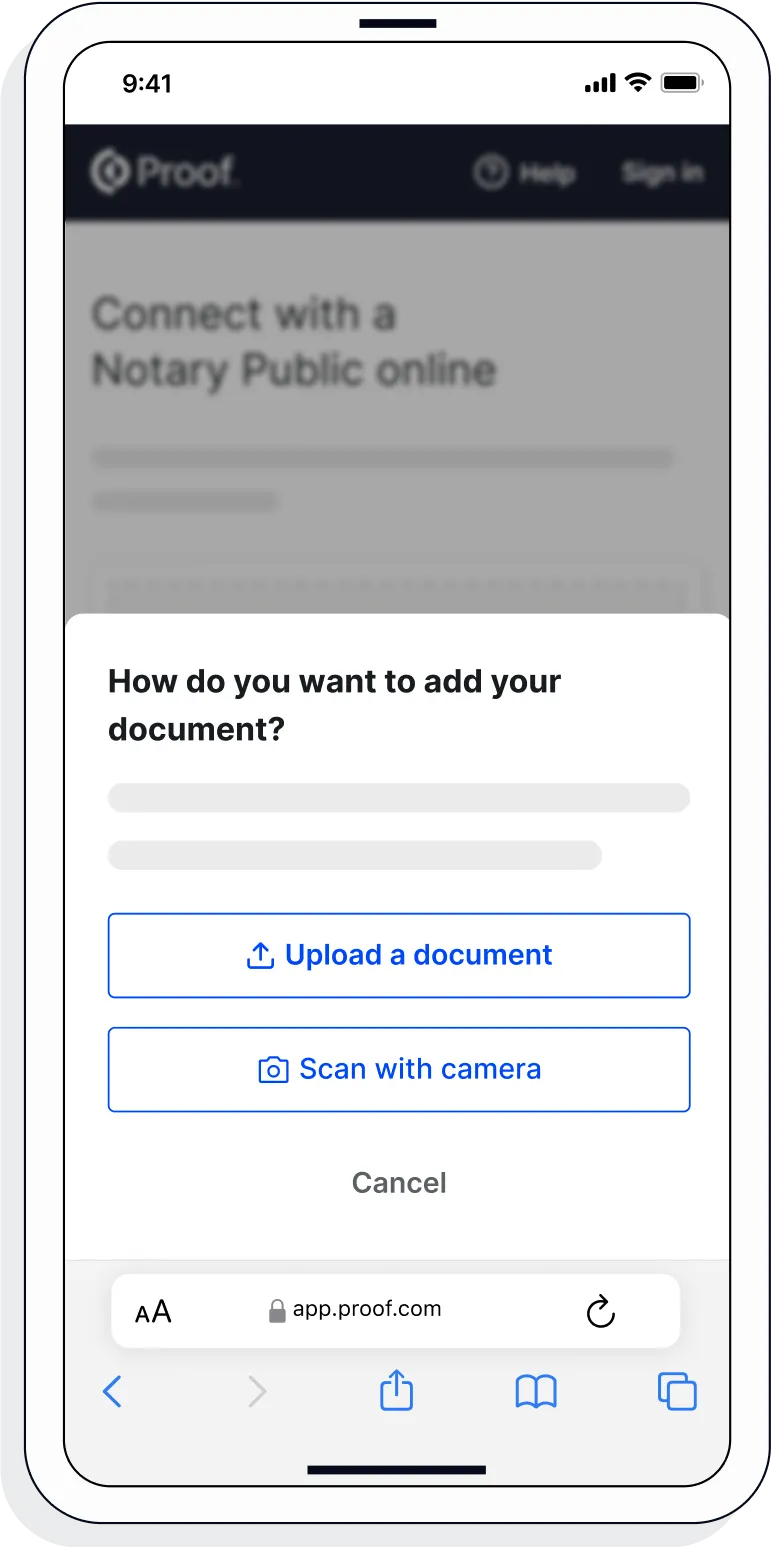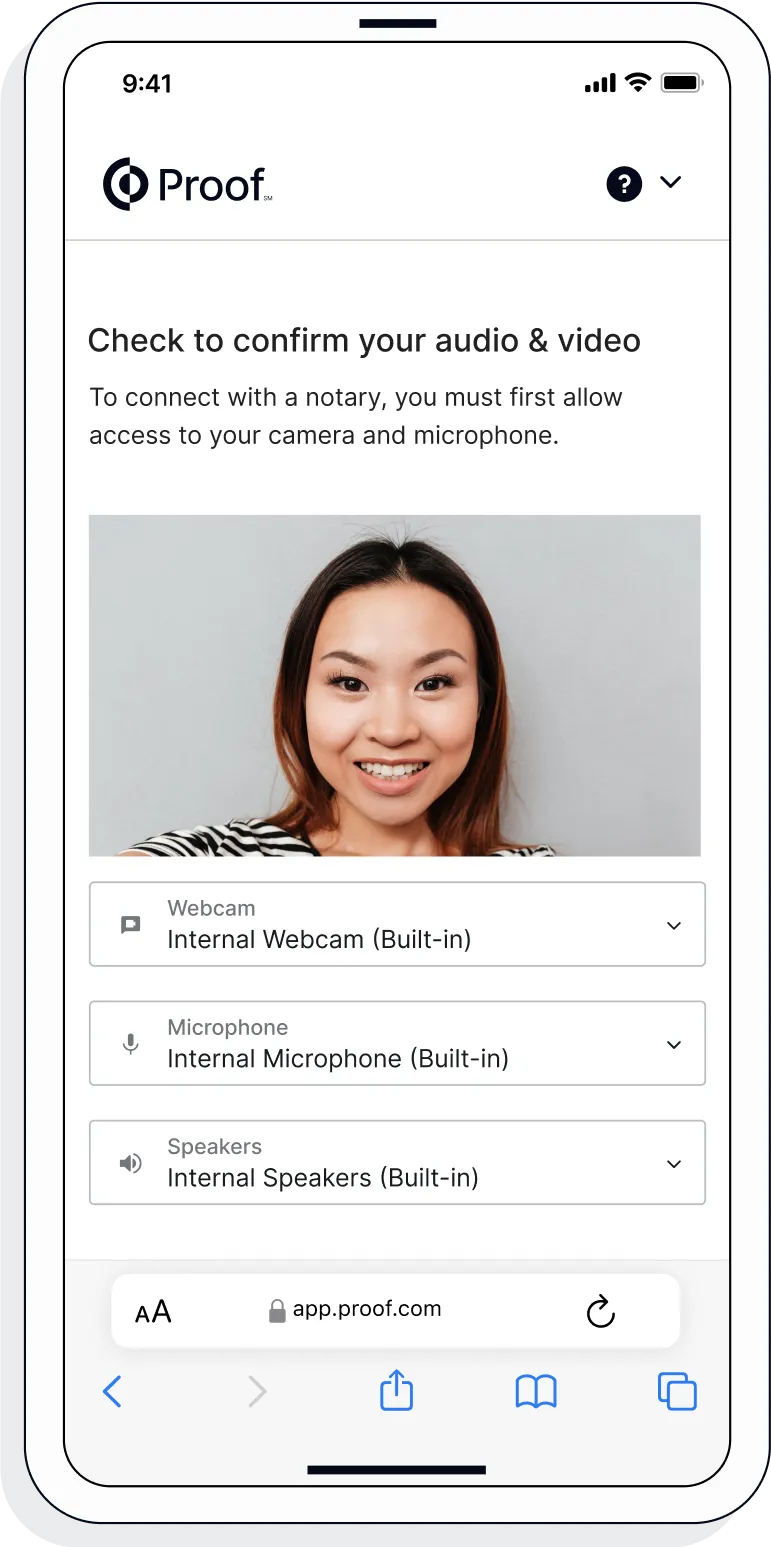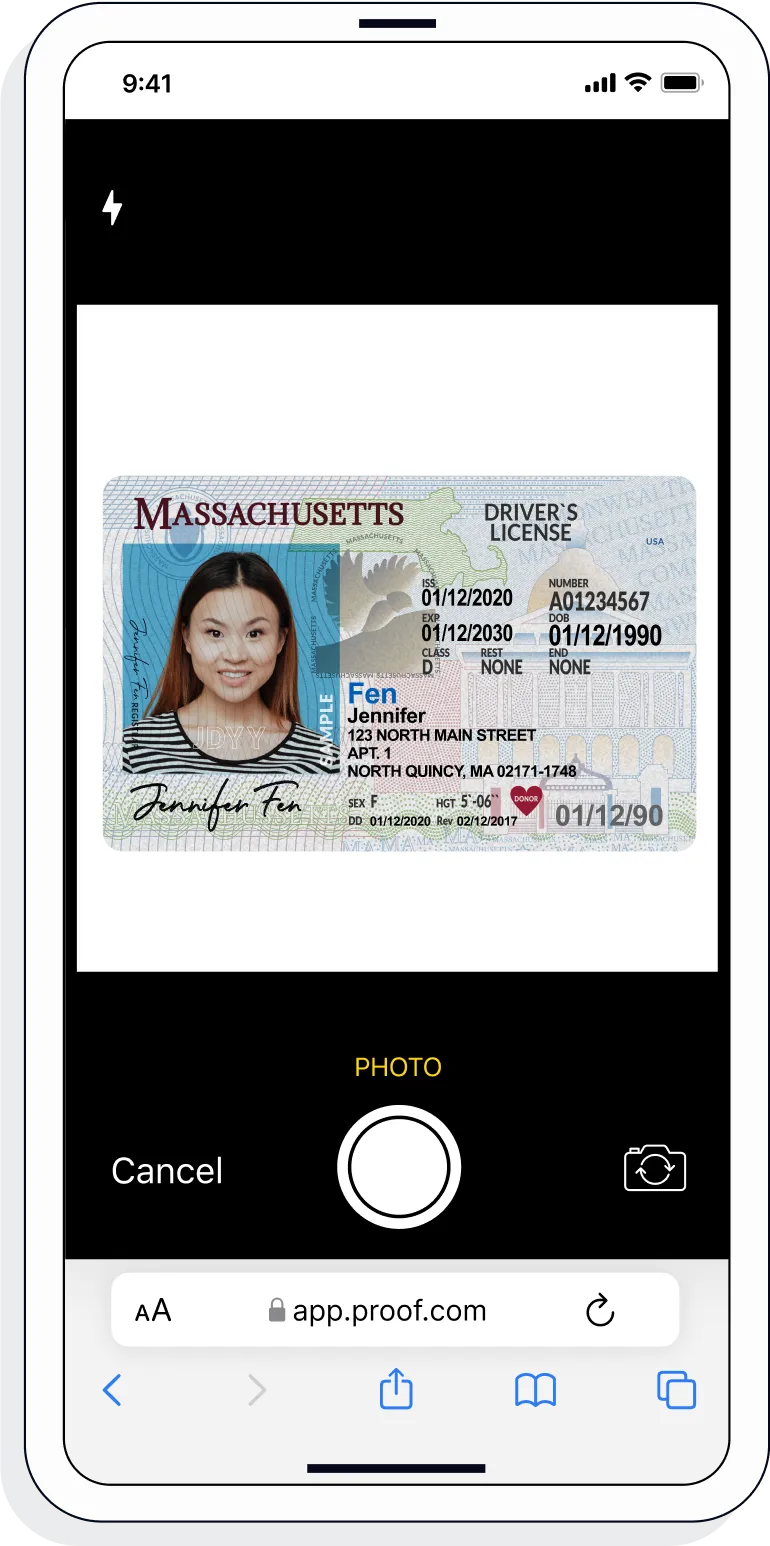Kansas Transfer on Death Deed
Get your Kansas Transfer on Death Deed notarized online quickly and securely. Our platform offers a seamless notarization experience, ensuring your document is legally compliant.

Frequently Asked Questions
Can the Kansas Transfer on Death Deed be notarized online?
What are the requirements for the Kansas Transfer on Death Deed?
What else do I need to know about the Kansas Transfer on Death Deed?

How It Works
Getting a document notarized is easy. Simply upload your docs, verify your identity and you will be connected to a notary via an online meeting. Notaries on the Notarize Network are always online and available 24/7.
-
1. Upload or scan your document
Upload the full document (not just the signature page) as a .pdf or .docx file. Don't have the file saved? Use your mobile phone to scan and upload the document.

-
2. Create a Proof account
Your documents and transaction details will be securely stored in your account where you’ll also be able to initiate future notarizations and eSigns.

-
3. Verify your connection
A Wi-Fi enabled device with a camera is required for all notary meetings. Having a strong setup will ensure you’re set up for success.

-
4. Verify your identity
Proof uses identification verification technology to ensure a secure transaction. Answer a few questions about your past, take a photo of your ID, and we’ll confirm your identity in seconds.

-
5. Connect with a notary on a video call
Notaries typically get connected with signers in as little as 2 seconds and are available 24/7.

-
6. Access your completed document
View and share your signed documents anytime directly from within the Proof platform.

-
7. Download or send document to another person
Share your documents within seconds.












